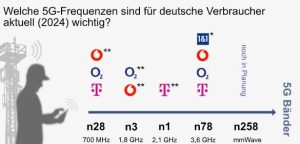How Is the FR1 Band Utilized in 5G Networks?
The Frequency Range 1 (FR1) band is pivotal in the deployment and operation of 5G networks across the globe. Its utilization taps into frequencies from 450 MHz to 6 GHz, bridging the gap between legacy systems and cutting-edge technologies. This article dives into the specifics of how FR1 is harnessed to facilitate widespread adoption and versatility in 5G applications.

Enhancing Coverage and Connectivity
One of the primary uses of the FR1 band in 5G networks is to enhance coverage. Given its lower frequency range, FR1 is excellent for providing broad, extensive coverage, including in rural areas where higher frequency signals like those of FR2 might not reach effectively. It penetrates buildings, natural landscapes, and urban structures far more efficiently than higher frequencies, ensuring that users experience reliable service both indoors and outdoors.
Balancing Speed and Efficiency
While it doesn’t boast the high speeds of FR2’s millimeter waves, the FR1 band still marks a significant improvement over 4G LTE. Typical 5G speeds on FR1 range from 100 Mbps to over 1 Gbps, which is ample for most applications such as streaming, gaming, and high-speed data transfer. This speed is complemented by a robust capacity to handle more simultaneous connections, making it ideal for busy urban centers and congested areas where many devices need to connect to the network without degradation in service quality.
Seamless Integration with Existing Infrastructure
A key advantage of utilizing the FR1 band in 5G networks lies in its compatibility with existing cellular infrastructure. Many regions can upgrade their current 4G systems to 5G without the need for extensive new installations, which is not only cost-effective but also accelerates the rollout of 5G services. This strategic utilization ensures a smoother transition for service providers and end-users alike, minimizing disruption while maximizing reach.
Power Efficiency and Device Longevity
Devices operating within the FR1 spectrum are generally more power-efficient, which translates to longer battery life and reduced energy consumption. This efficiency is crucial for IoT devices and mobile technologies that rely on prolonged operational times without frequent recharging, supporting the sustainable expansion of interconnected devices in a 5G-driven ecosystem.
Supporting Diverse Applications
The versatility of the FR1 band makes it suitable for a broad spectrum of applications. From basic voice and data services to more demanding applications like smart city technologies and IoT networks, FR1 provides the necessary foundation. Its robustness ensures that everything from emergency services to commercial operations can rely on consistent and accessible communication capabilities.
FR1 band utilization in 5G networks is fundamental not only for its technical capabilities but also for its role in ensuring a seamless user experience across various environments and applications. As 5G continues to evolve and become the standard in mobile technology, the strategic importance of FR1 in achieving universal connectivity and support for an ever-growing number of devices and services becomes increasingly apparent. By leveraging the strengths of FR1, network operators are able to deliver a reliable, efficient, and widespread service that meets the demands of today’s connected world.